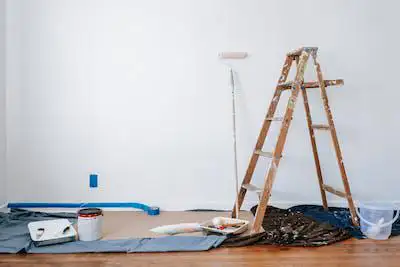First Steps: Post-Repair Inspection and Maintenance
1.Schedule a follow-up inspection: Once the repairs are complete, request a follow-up inspection from your roofing contractor within a few weeks. This allows them to identify any potential issues caused by the repair itself, such as loose flashing or improper sealant application.
2.Clear the debris: Don't underestimate the power of a clean slate. Debris from the repair, like shingle scraps or nails, can clog gutters and drainage systems, leading to water backup and potential leaks. Sweep the roof thoroughly and clean out the gutters to ensure smooth water flow.
3.Check for proper flashing: Flashing, the thin metal strips around roof penetrations like chimneys and vents, is crucial for waterproofing. Ensure all flashing is properly installed, sealed, and free of tears or gaps.
4.Inspect the seals: Sealants around vents, pipes, and other roof penetrations are another line of defense against leaks. Check for cracks, peeling, or missing sealant and reapply if necessary. Use a sealant compatible with your roof material and the local climate.
5.Trim overhanging branches: Branches rubbing against your roof can damage shingles and create entry points for moisture. Trim any overhanging branches to ensure adequate clearance and prevent future friction.
Long-Term Protection: Building a Shield Against the Elements
1.Regular inspections: Schedule annual or biannual roof inspections by a qualified professional. They can identify minor issues before they escalate into major problems, saving you time and money in the long run.
2.Gutter maintenance: Clogged gutters are a recipe for disaster. Regularly clean your gutters and downspouts to ensure water flows freely away from your roof and foundation. Consider installing gutter guards to minimize debris buildup.
3.Proper ventilation: Adequate attic ventilation helps prevent moisture buildup, which can weaken roof structures and promote mold growth. Ensure your attic has proper ventilation through vents or soffit openings.
4.Seal the deal: Regularly check for and address any cracks, missing shingles, or loose nails. Apply a roof sealant specifically designed for your roof type to fill minor gaps and strengthen the overall waterproofing.
5.Know your climate: Different climates pose different threats to your roof. In areas with heavy snowfall, ensure proper snow removal to prevent ice dams and water infiltration. In hot climates, consider reflective coatings to reduce heat absorption and extend the lifespan of your roof.
Additional Tips and Tricks for Roof Resilience
Invest in quality materials: Choosing high-quality shingles and underlayment during repairs or replacements can significantly improve your roof's durability and lifespan.
Mind the moss: Moss growth can retain moisture and damage shingles. Consider applying a moss-killing solution or manually removing moss buildup with caution.
Beware of DIY dangers: While some minor repairs may be tempting to tackle yourself, complex repairs or tasks requiring access to steep slopes are best left to trained professionals.
Document everything: Keep a record of all roof repairs, inspections, and maintenance activities. This documentation can be invaluable for insurance claims or future reference.
Remember, your roof is an investment, and proactive protection ensures its longevity and your home's well-being. By following these tips and building a consistent maintenance routine, you can face any storm with confidence, knowing your roof stands strong as your home's unwavering protector.
This guide provides a comprehensive overview of post-repair roof protection, but remember, each roof and situation is unique. Always consult with a qualified roofing professional for specific advice and recommendations tailored to your needs. With the right knowledge and proactive care, you can ensure your roof remains a reliable shield against the elements for years to come.

